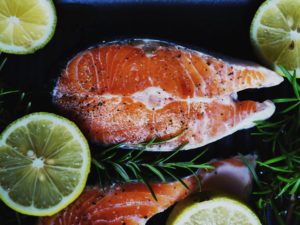Inflammation is a normal and important body function except when it gets out of control and becomes “silent,” lying just below the level of pain and causing tissue and cellular disrepair. This silent or hidden inflammation contributes to the development of chronic diseases.
In chronic inflammation, what’s happening is that something inhibits completion of this process It could be a weakened immune state, elevated blood glucose, oxidative burden, adrenal fatigue with low cortisol reserves among other things. In chronic inflammation, the cardinal signs of inflammation— heat, and redness are no longer present but pain and decreased function persist. In these scenarios, monocytes become more predominant which is also a functional sign of systemic inflammation.
Essentially ongoing phagocytosis causes recurring tissue damage but there’s also a process of limited repair. Lymphocytes recruit and activate the B & T cells because they are simultaneously trying to respond to injury and initiate repair.
So when the condition causing acute inflammation is not resolved, when it’s not controlled and self-limited, the inflammation passes to this longer term chronic phase. Some pathogens provoke chronic rather than acute inflammation.
Which white blood cells would we see increased in acute inflammatory conditions? The neutrophils are typically the main players in acute inflammation Which white blood cells would we see increased in chronic inflammatory conditions? The macrophages and lymphocytes. As the neutrophils communicate with the rest of the immune system, macrophages and lymphocytes are called into action (or recruited to the sight of the crime). These activated agents then become the main cells of chronic inflammation.
Chronic Inflammation is a Three-P Process that we can consider: persistent (injury or infection), prolonged (exposure to toxic agent), perpetuating (immune reaction that results in tissue damage and inflammation)
SOURCES OF INFLAMMATION INCLUDE:
- cuts
- scrapes
- burns
- splinters
- dirt
- stitches
- microbial toxins
- chemical exposure • frostbite
- virus
- bacteria
- yeast
- parasites
- radiation
- trauma
- heavy metal • sugar
- gluten
- dairy
- personal food sensitivities/ hypersensitivities
- nutrient deficiencies
- dehydration
- hormone imbalances
- stress
- lack of sleep
- autoimmunity
- intestinal dysbiosis
- medications
- chemotherapy
- genetics
- neurotransmitter imbalances
There are a number of conditions to be considered as chronic inflammatory conditions. Include:
- acne
- allergies
- asthma
- autoimmunity
- Celiac
- Crohn’s disease
- chronic pain
- eczema
- Lyme Disease
- IBS
- gluten sensitivity
- insulin resistance
- obesity
- CVD
- Alzheimer’s
- Parkinson’s
- autism
- mental illnesses
- diabetes
- cancer
- chronic infections
- chemical sensitivities
- osteoporosis
- chronic fatigue
- fibromyalgia
- infertility
And more and more chronic conditions are being seen to have a chronic inflammatory component.
But, at the core, what happens when these inflammatory conditions are present and active is that we’re actually continually both confusing and weakening the immune system. A good example here is that if you continue to eat a food that you are sensitive or allergic to, or you have an autoimmune disease, or you’re overweight (because the body actually treats overloaded fat cells as something wrong, and attacks them), then the immune cells are communicating and firing and signaling in a constant way.
And chronic inflammation — as I’ve mentioned and as we’ll continue to discuss — can lead to more pronounced and downstream health issues like cancer, heart disease, diabetes, and also asthma, eczema, depression, fibromyalgia and more. These conditions are all DOWNSTREAM issues of an upstream inflammatory cascade.
What shall we do to prevent chronic inflammation? Lifestyle treatment for inflammation
- increase exercise and consider lymphatic flow (rebounding, breathing exercise)
- “clean-up” the diet eliminating all food additives and chemicals
- eliminate any processed or oxidized oils that lead to free-radical damage

Food treatment for inflammation
- heal the gut (reduce the inflammatory response to undigested proteins)
- optimize digestion, assimilation and elimination
- remove all food allergies and address sensitivities
- work toward an anti-inflammatory diet – eliminating the big offenders (gluten, sugar, dairy, consider the nightshades in extreme situations)
- eliminate all oxidized oils and processed fats
- eat organic (eliminating all additives, hormones and pesticides from foods)
- drink enough water
Functional test for inflammation
- C-Reactive Protein
- Other acute phase reactants such as ESR and ferritin.